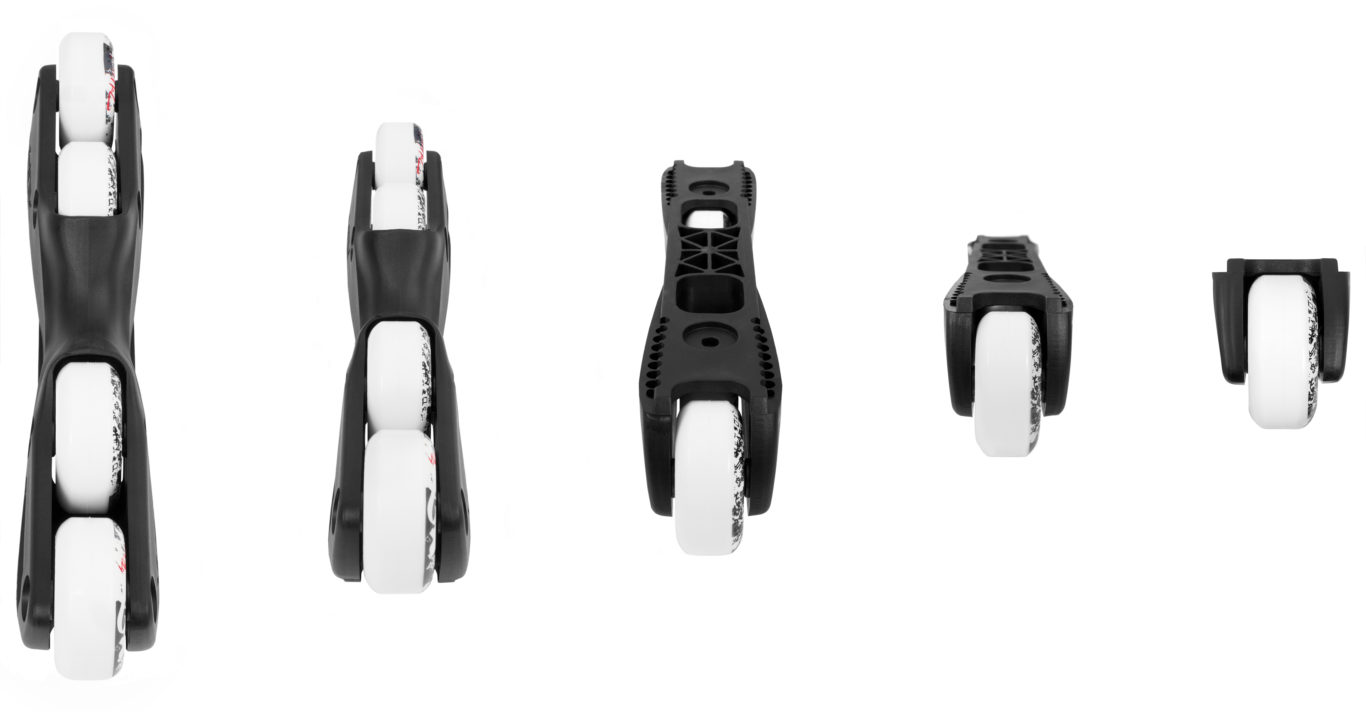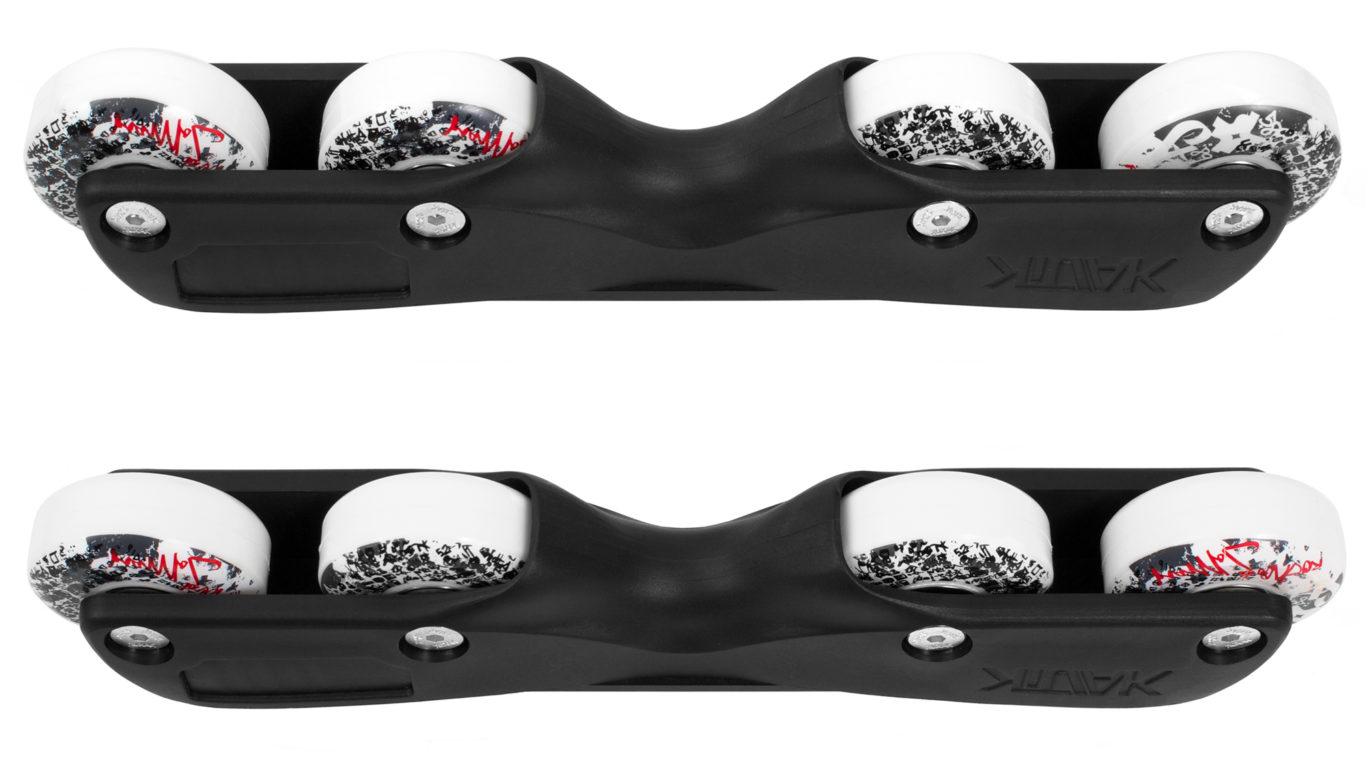Story by Christoph Böttcher
Photography by Donal Glackin & Christoph Böttcher
Hi Conor, thank you for taking some time off your busy schedule to do this interview with Be-Mag! For the folks that don’t know you yet: who is Conor Manweiler?
I was born and brought up in dirty Dublin, Ireland. I‘ve been rollerblading since I was about 10. I‘m 25 now. I have a son called Callum with a beautiful girlfriend called Isabel and I run and own a skate company called Kaltik.
How’s the scene in Ireland and the UK?
It seems the past few years, skating in Ireland has got really popular again, a big influence on this was the councils building so many public free parks all over the country.
Tell us about the urge that made you kick off your company, please. When did you form Kaltik and what were your first products? How is it going so far?
Since I was a kid I always wanted to do something involved with rolling, either work in a skatepark or own one or run a skate company. I established Kaltik in 2002 and its going good.
What is your occupation?
Well, I‘m a full-time father, as my girlfriend studies aviation in Dublin City University. Besides taking care of my son everyday I do Kaltik stuff. A lot is done on the computer and the rest done around Dublin from getting the clothes made and getting the frames made. Yes, I now work with Kaltik everyday and the great thing is I work in my own time when suits.
Did it help your company to take the step of adding hardware to the range of product?
Yes, I think once I started to make frames, people started to look at Kaltik more seriously and a lot more shops were interested in stocking Kaltik.
Did you design hardware for other companies in the past or licensed/sold some of your designs?
Me and an old time rolling buddy from Dublin designed a frame concept years ago, a freestyle frame with unique angles. This concept was licensed to a company in the UK as we didn‘t have money at the time to produce them. They got them made in China. We never got paid and shit went sour, so we did it ourselves the right way!
How was the response for your freestyle frames when they first came out? How much of their success in Ireland and the UK was owed to the fact that people were buying a product that was developed and sold by someone from their region with a team mainly consisting of skaters from this area?
Yes, the freestyle frames created some hype, but I think many heads were afraid of something new, as a lot of rollers are so used to the usual brands. I feel the freestyle frames were mainly supported and sold in Ireland and the UK, a lot of this has to do with the company being Irish and Kaltik supporting and sponsoring events and people in Ireland and the UK.
Was it difficult to find distribution partners for the rest of Europe or the US?
Yes, I feel it was difficult to find distributors. I‘ve learned you have to establish and promote your company yourself for years until its big enough that distributors will feel the need to take on your products to sell them. The longer I‘ve been running Kaltik, the more of an understanding I get of the rolling industry. I find distributors who already deal with other frame companies don‘t want to support Kaltik. And also that a lot of these big corporations or distributors are all tied up with one another.
How long have you been working on your new flat frames? How do you start off a project like that? What other people were involved by contributing ideas or testing samples?
It was an idea for many years. We spent a small fortune on prototyping many different concepts. I think we only got serious about the flat frames in the past two/three years. My good friend Damo helped me and so did my dad along with some others with developing and sampling the frames. We made some of the early prototypes from a soft wood. Later on we got samples milled from nylon blocks with a company in Ireland.
Why do you believe this frame is bringing something new to the table? Will it affect the way we look at frames in the long run? Why did you decide to develop a product that is obviously a lot different in many aspects to the current frames available? Don‘t you think the frames market offers everything a skater can ask for at the moment?
We use a different plastic/nylon-compound that is unique. We offer a unique H-block design to allow you to skate up to 60 mm wheels set up flat. By supporting Kaltik you are supporting a true grass roots skater owned company. And no, I believe there is still a lot to be made and done and that rolling is still very young.
Why do you see a demand for a frame that is exclusively designed to be used 4 down, since most people skate anti or freestyle nowadays? What are the advantages of flat-skating?
I‘ve seen a lot of people ride the flat frames with anti rockers. I guess its personal preference, I believe a lot of people made the transition back to flat set-ups over the past few years. I know so many rollers that never took to the freestyle concept at all and have always skated anti rocker. One main advantages of skating flat is it gives me extra speed and control.
How are the parts that cover the wheels holding up during the life of the frame?
They hold up good. They have been designed to do so. But don‘t get me wrong, all frames wear down. We already have ideas for strengthening up that area for a second generation in the future.
How many sizes do you carry? What are the wheelbases for each size and the max. wheelsize for the frames?
We carry two sizes, S/M and M/L. Max. wheel size for both flat and freestyle is 60 mm. With RB skates it‘s 72 mm as the boot is shaped different. Wheel bases are 239 mm for S/M frames and 259 mm for M/L frames.
How many prototypes were made to perfect the design? Or did you hit the bull’s eye right at the beginning?
Wow, I lost count… We made some wooden prototypes. Then we started to get CNC ones made. I‘m guessing 20 odd prototypes. It always takes more time and more prototypes than expected. And more money… Adjusting the frames length and height and sizing and strengthening the walls and h-block area and then testing materials is a whole other thing in itself.
Injection molding is a rather efficient way to produce skate hardware. Can you give us a quick idea of how a mold is produced, please? Why is it so expensive? Is it the developing or the production cost?
A mould is a tool which is the negative of the frame. This tool is then put into a large injection molding machine which inserts hot liquid plastics. Then the plastic sets, the tool is opened and out drops the frame. From this process frames are produced.
It is the mould that costs a small fortune. This is also why a lot of skate companies use the same size boot but different size liners. For a skate company to have a different size shell for each size skate, they would need a different tool for each. And tools cost big money. Once the mold is made you‘re just paying for the material used and the cost for the running of the machine to inject the material.
Some plastics that have very interesting characteristics to be used for grinding can’t be injection molded because of their molecular structure. Why is that? Is there a material you would have liked to use but couldn‘t out of this reason?
As you stated in the question it‘s because of their molecular structure. Meaning they can‘t be melted down and reset. But no, this didn‘t effect us as we found a great material that can be injection molded.
Would it make the frames more expensive if they were machined from one piece? Why?
Yes, it certainly would as each frame would have to be cut and machined from a block. Which takes a lot more time and leaves a lot more waste material. The more time running these machines the more costs occur and you also have to pay for any unused waste material.
Please give us a little insight on your efforts to get the compound right. What base material did you choose in the end and how did you alter it?
I basically bought some plastic mags and books, read up online about the latest discoveries within the plastic-world and spoke with some companies who specialise in injection moulding and work with different plastics every day. Some of the early prototypes which where CNCed (cut from Nylon blocks) where very, very strong and it was a great material overall. But the problem was we could not use this material in the injection moulding process as it could not be injection moulded.
Now, I don’t think any skate companies would like to tell other skate companies which compounds they use. All I can say is that we found glass fill compounds snap easier and by mixing different high impact plastics you can get very strong frames.
How much does it cost you to make a pair of frames? Where are they produced? What adds to the price I am paying at the shop?
As yet I still don‘t have an exact cost per pair as there are so many factors involved. And many factors are changing in costs constantly. These factors are prototyping, CAD work, tooling, production, assembly, packaging, promotion, advertising in mags, ads online, travel, tradeshows etc. etc. They are made here in Ireland as so was the tools. VAT and taxes add to the retail cost and so does does the margin that the distributor and retailer receive.
Have you patented your flat frames?
Yes, the flat frames have a pending patent.
Will we see more pro versions of the flat frames in the future? Will they differ to the original in any aspect other than color?
We at present have two pro models in production being Steven Swains and Aaron Feinbergs. Both being same in sizing and dimensions but slightly different in material.
When can I get my hands on the Kaltik flat frames in shops around Europe and the US?
Now, at Aggressivemall in the US, Thisissoul in the Netherlands, Grindhouse in Germany and Rampworx in the UK. Just to name a few of our supporters, also Clic ’N Roll and Nomades in France, Ease Dist. in Japan and Gordo in Australia stock our frames.
Anyone you want to thank?
Yes, my parents for all ways been so supportive, all my friends and anyone who I rolled with over the years. Donal Glackin for the pictures and Damien Mc Evoy for being the brains. Team Skull fuck for always been mad with it. All the old Salomon UK crew. The ECP crew the FIA crew, Scauldkind etc. Bell for been a damp yoke. Thanks to the whole Kaltik Team.
Thank you once again for your time, Conor. Be-Mag wishes you the best for the future!
Thanks! And see you soon, keep rolling!
Here’s an edit of Kaltik team rider Steven Swain to show you what is possible with a pair of Kaltiks rockered 4 down.
Check out Kaltik Hardware on the web here:








